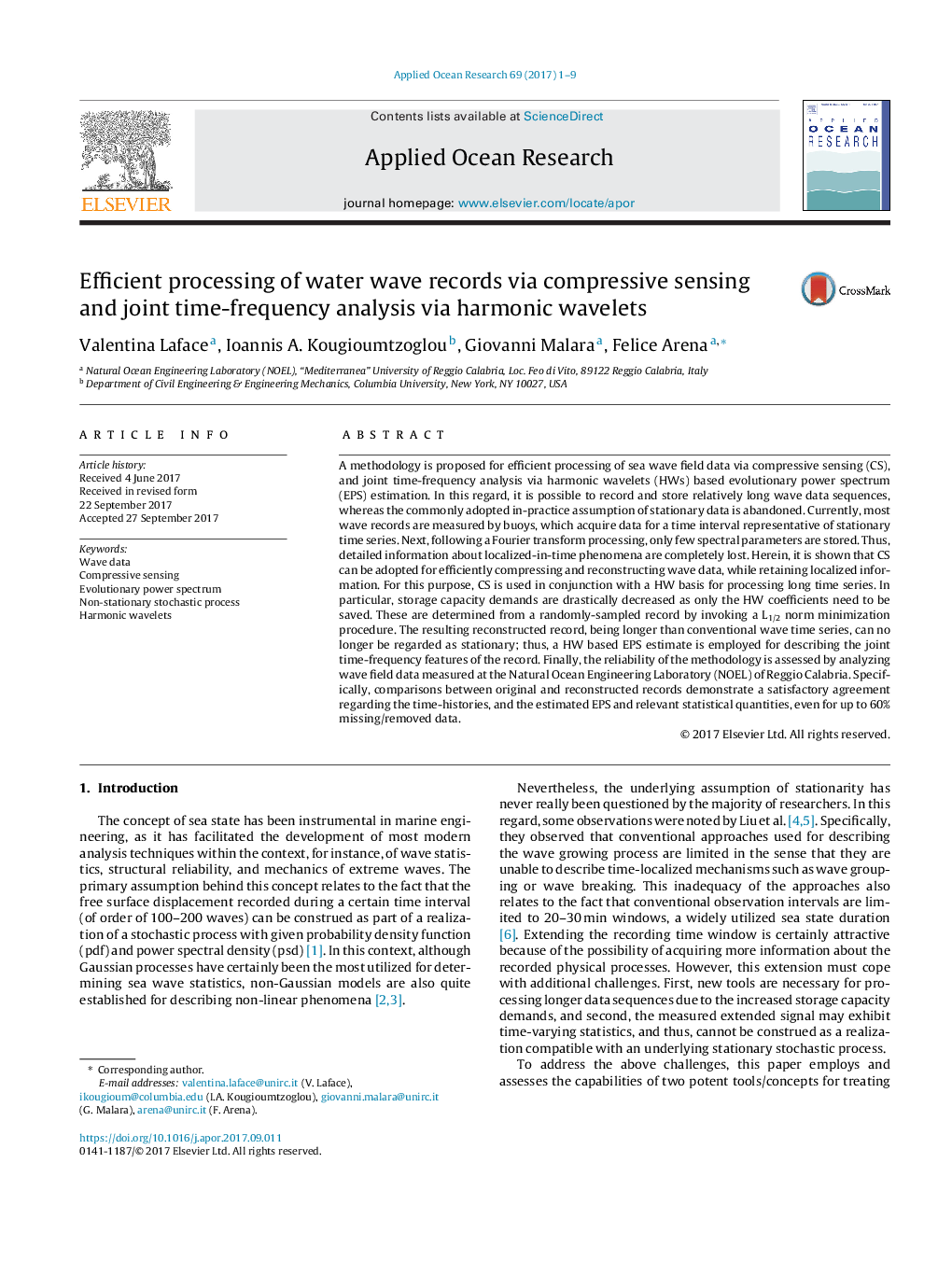| Article ID | Journal | Published Year | Pages | File Type |
|---|---|---|---|---|
| 5473141 | Applied Ocean Research | 2017 | 9 Pages |
Abstract
A methodology is proposed for efficient processing of sea wave field data via compressive sensing (CS), and joint time-frequency analysis via harmonic wavelets (HWs) based evolutionary power spectrum (EPS) estimation. In this regard, it is possible to record and store relatively long wave data sequences, whereas the commonly adopted in-practice assumption of stationary data is abandoned. Currently, most wave records are measured by buoys, which acquire data for a time interval representative of stationary time series. Next, following a Fourier transform processing, only few spectral parameters are stored. Thus, detailed information about localized-in-time phenomena are completely lost. Herein, it is shown that CS can be adopted for efficiently compressing and reconstructing wave data, while retaining localized information. For this purpose, CS is used in conjunction with a HW basis for processing long time series. In particular, storage capacity demands are drastically decreased as only the HW coefficients need to be saved. These are determined from a randomly-sampled record by invoking a L1/2 norm minimization procedure. The resulting reconstructed record, being longer than conventional wave time series, can no longer be regarded as stationary; thus, a HW based EPS estimate is employed for describing the joint time-frequency features of the record. Finally, the reliability of the methodology is assessed by analyzing wave field data measured at the Natural Ocean Engineering Laboratory (NOEL) of Reggio Calabria. Specifically, comparisons between original and reconstructed records demonstrate a satisfactory agreement regarding the time-histories, and the estimated EPS and relevant statistical quantities, even for up to 60% missing/removed data.
Related Topics
Physical Sciences and Engineering
Engineering
Ocean Engineering
Authors
Valentina Laface, Ioannis A. Kougioumtzoglou, Giovanni Malara, Felice Arena,
